Ross hops aboard the Orbea Occam M10 – is it really the all rounder it’s billed as?
Last year Orbea relaunched the Occam as a 140mm travel, do it all trail bike. While the Occam name had existed in the Orbea lineup for a few years, it had been as two distinct models – the AM and the TR. While they may have shared the same name the bikes had two very different purposes. The TR was a 130mm travel XC focused 29er, while the AM was a 27.5” wheeled 150mm travel trail bike.
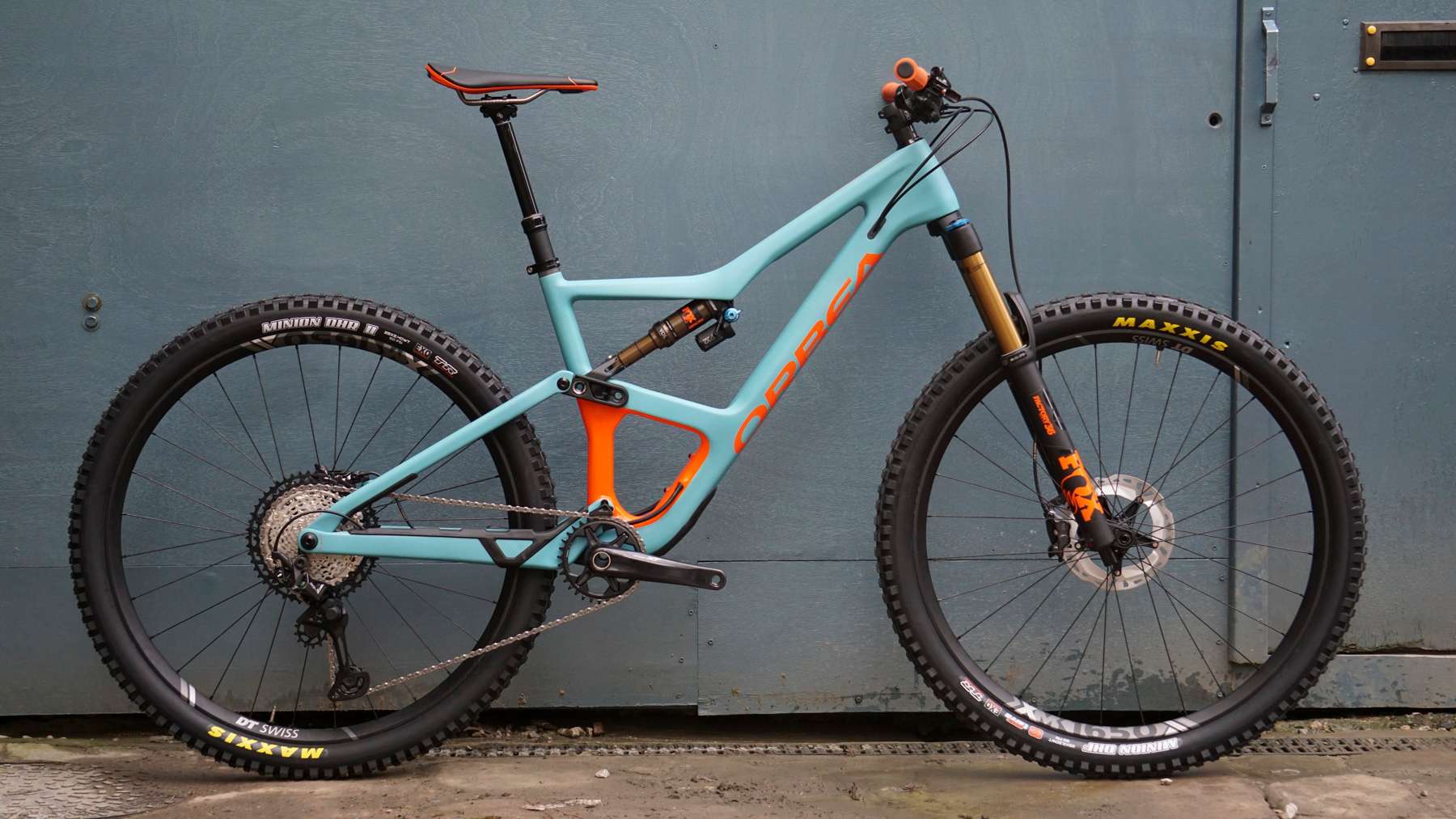
The new Orbea Occam has been designed to take the best traits of those two bikes – the climbing and efficiency of the TR, the longer travel and stability of the AM – and combined it with the design features of the enduro biased Rallon to create the new do everything trail bike.
Rolling on 29 wheels only, the new Occam sports 140mm rear travel delivered via a concentric axle pivot and can be paired with either a 140mm or 150mm fork up front with only minor changes to geometry. All models are supplied with Fox suspension and if you think 140mm is more than enough front end bounce then you get a 34mm stanchioned fork, or those with harder hitting intentions opting for 150mm of travel, get a chunky 36 up front. Upscaling to the 150mm slackens both the head angle and seat angle by 0.5 degrees each.
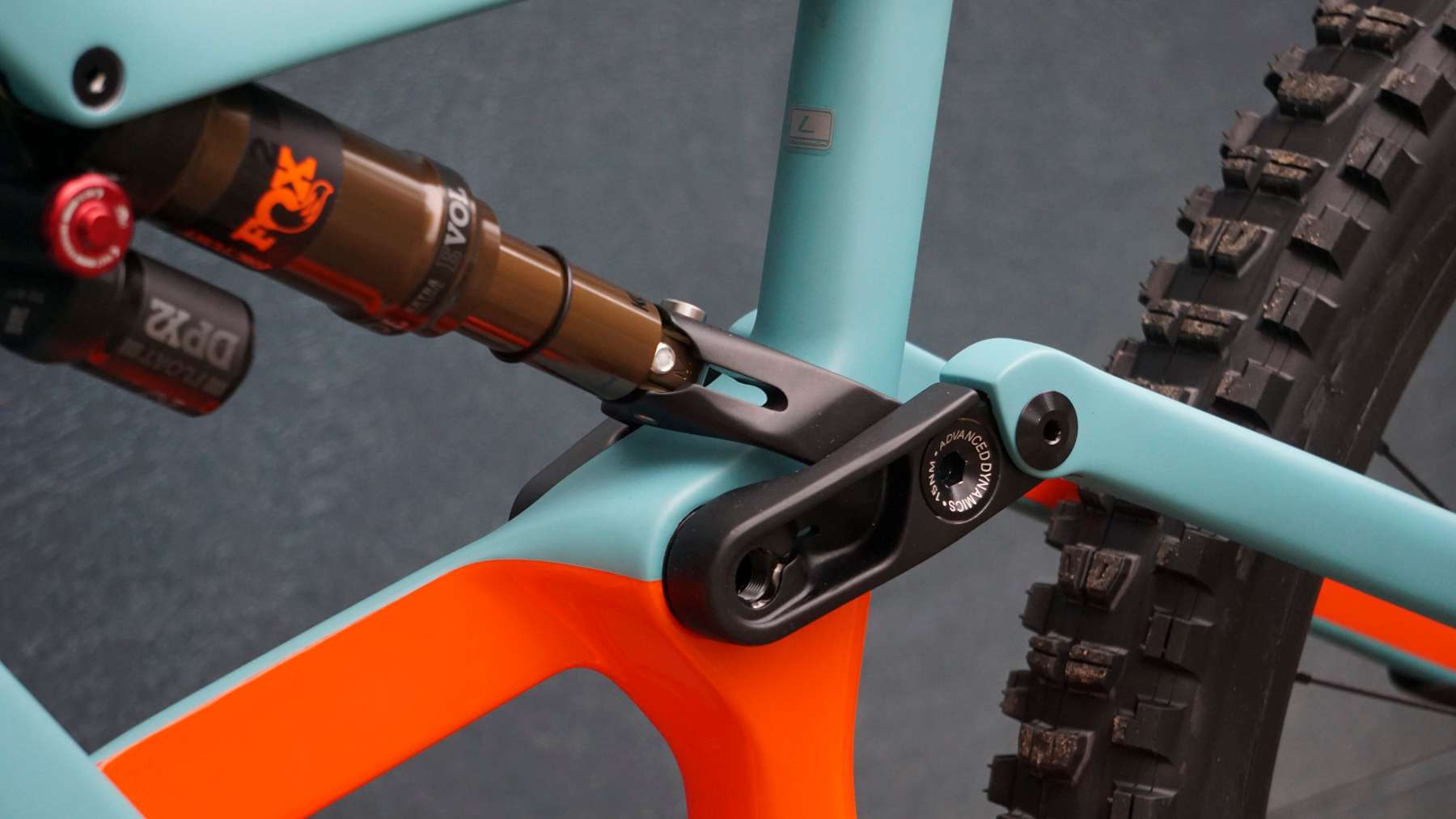
Available in both carbon and aluminum framed models, the design of the Occam frame has been influenced by the style and functionality of the Rallon. Using an asymmetrical frame design, but swapping the side of the strut, this asymmetry is designed to help balance frame stiffness with low weight.
Related stories
The Orbea Occam Review
The Occam we’ve had on test is a carbon framed M10 model in size large. With a retail price of £4,399 the M10 comes loaded with high end kit. One of the great features with ordering from Orbea is the ability to customise your build, from changing the fork, to swapping components, to custom paint options through the Orbea MyO program on the M10 and M-LTD models. Making use of this customisation, I chose to up-spec the fork to the 150mm travel option and changed the tyres from the stock High Roller 2 and Recon, to better suit the riding I’d be doing. These additional upgrades increase the price to £4,566.
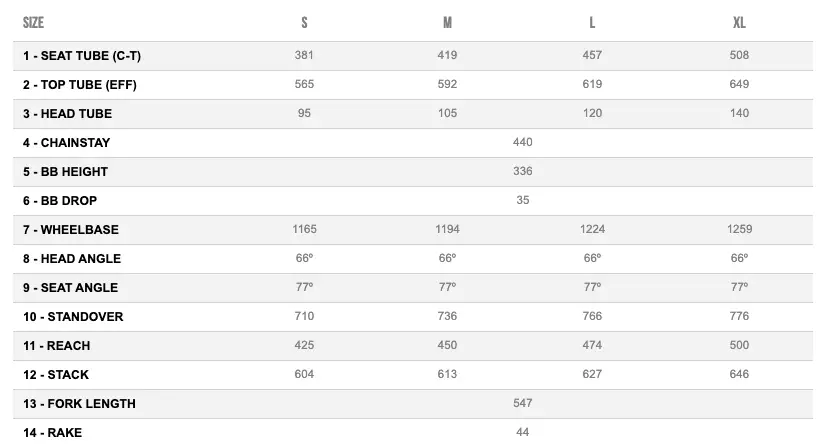
On paper, the Occam’s geometry looks spot on for a do everything trail bike. With a 150mm fork plugged in, the head angle relaxes to 65.5 degrees, while the seat angle is 76.5 degrees. Add to this a reach of 475mm and a 440mm rear centre, and the Occam looks spot on for modern trail riding. It’s also a good weight for a bike that’s designed to do everything, with our size large test bike (complete with chunky forks and proper tyres) weighing in at 29.8lbs straight of the box.
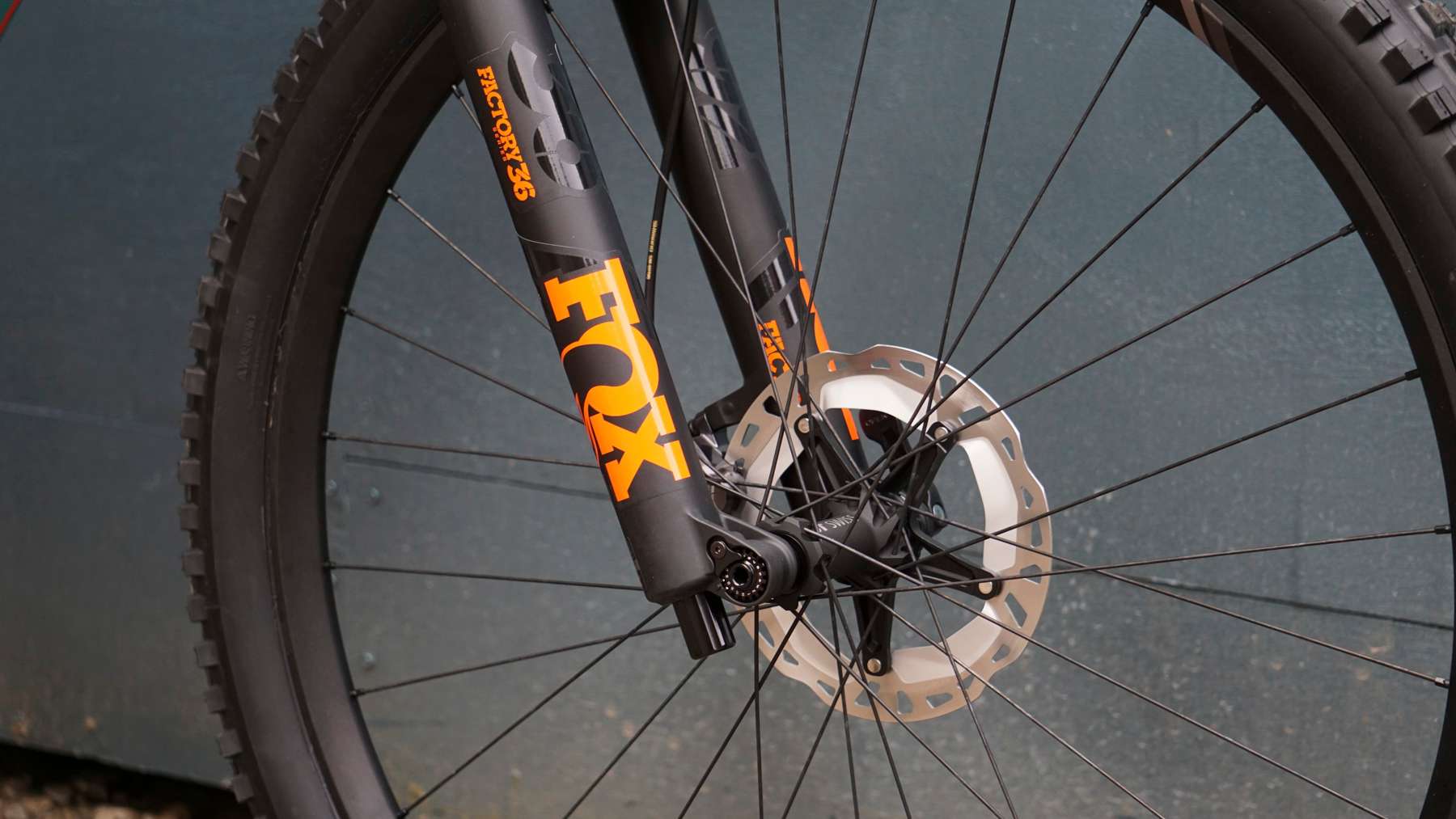
The carbon frame looks top quality and features a really high end finish. Under the downtube and wrapped round the chainstay are custom moulded rubber frame protectors to ward off rock strikes and chain slap, and keep things nice and quiet when things get rowdy.
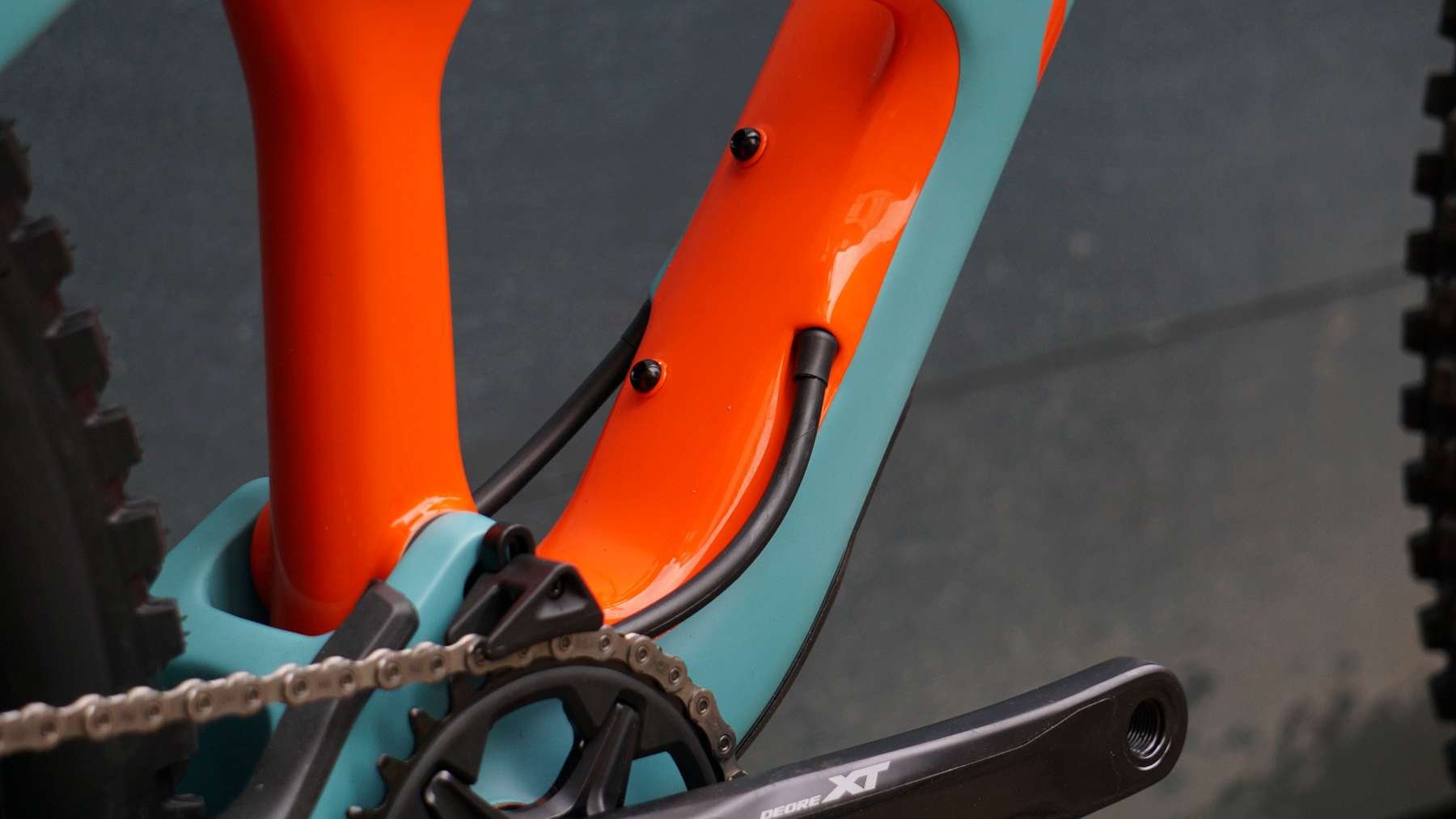
Hose protectors and port covers 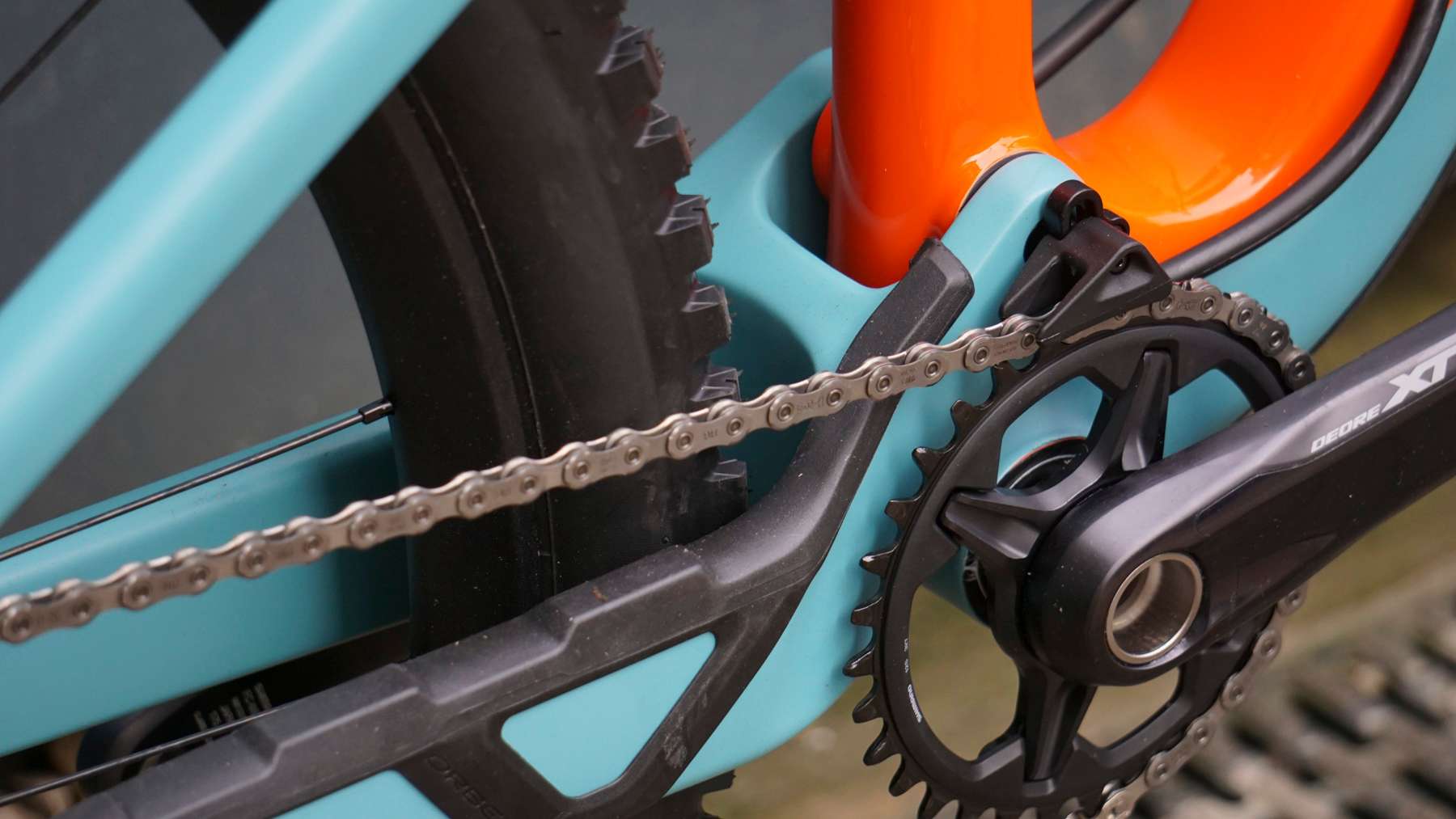
Moulded protector for chain slap
The Occam features full internal routing with the hoses entering through neat ports at the headtube and exiting at the bottom of the downtube, but on the topside to protect from rock strikes. The hoses also run through protective tubes when out of the frame and have rubber port covers on the frame exits which are a nice touch and add to the quality feel. And inside the front triangle you’ll find bottle bosses with space for a full size water bottle.
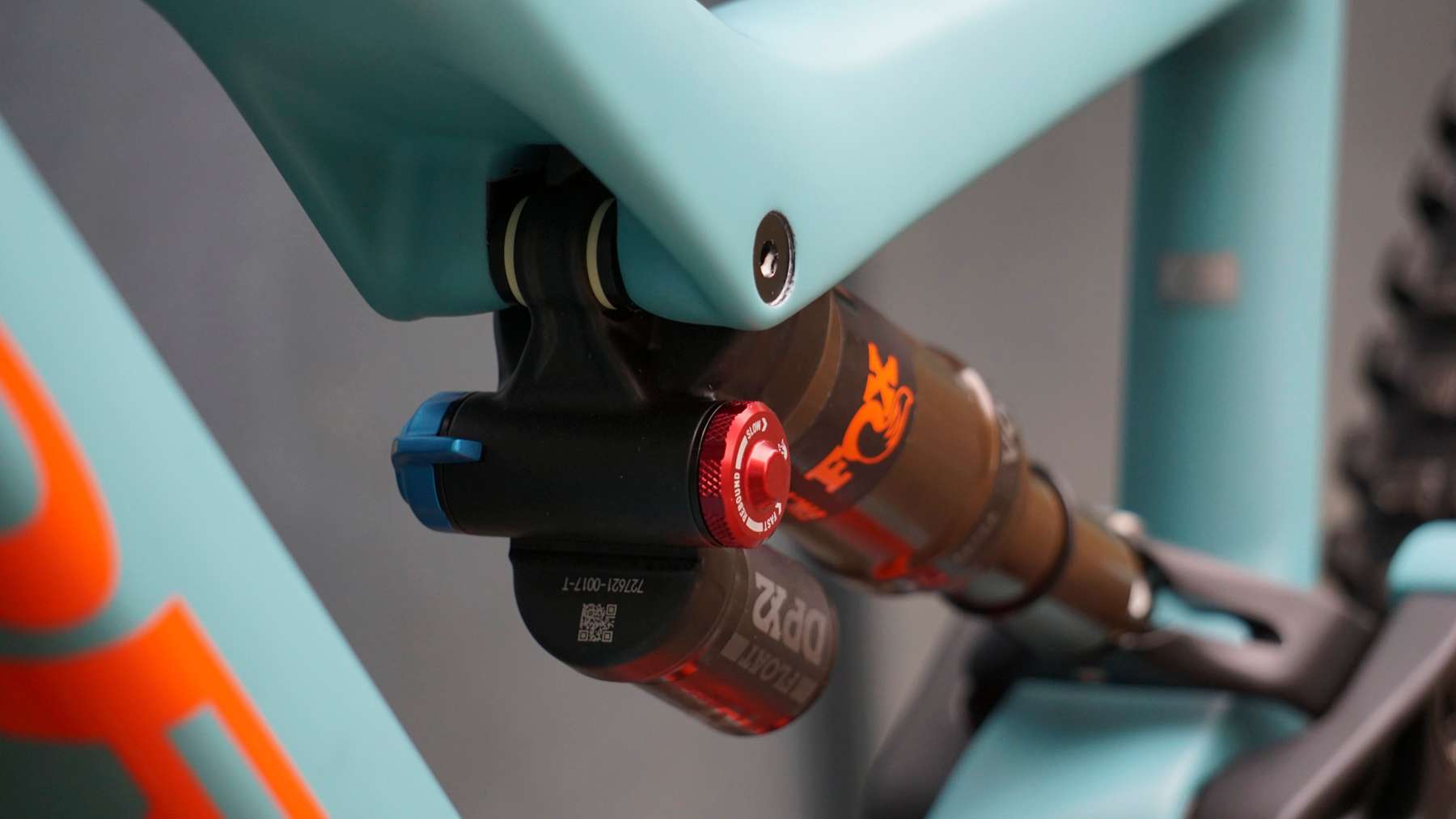
While not the top end or most expensive model in the range, the spec of our test bike left little room for improvement. As I’d up-specced the fork to 150mm travel, it came fitted with a Kashima finished Fox 36 Factory spec fork up front, paired with a Factory spec DPX2 to keep things in check out back, again coated in super slippery Kashima.
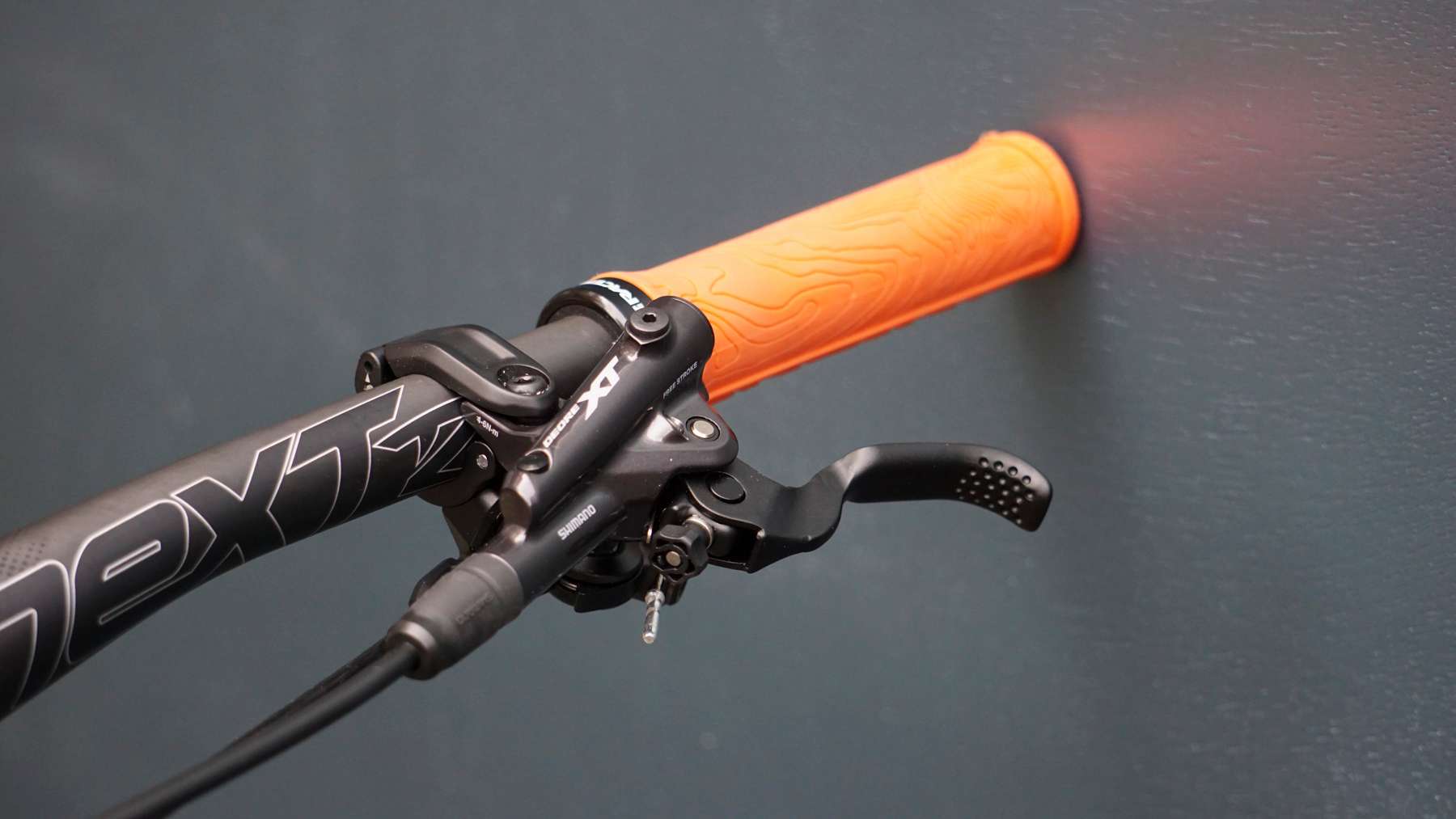
XT 4 Pot stoppers do a good job… 
… but it would be worth investing in a bigger front rotor
Stop and go on the Occam are both taken care of by Shimano. The drivetrain is a full XT 12 speed system with a 10-51 tooth cassette, 32 tooth chainring, and 175mm cranks giving plenty of range for grinding up climbs and sprinting into descents. Brakes are again XT level, with a set of 4 pot calipers clamping onto 180mm Ice-Tech rotors front and rear giving plenty of power and modulation.
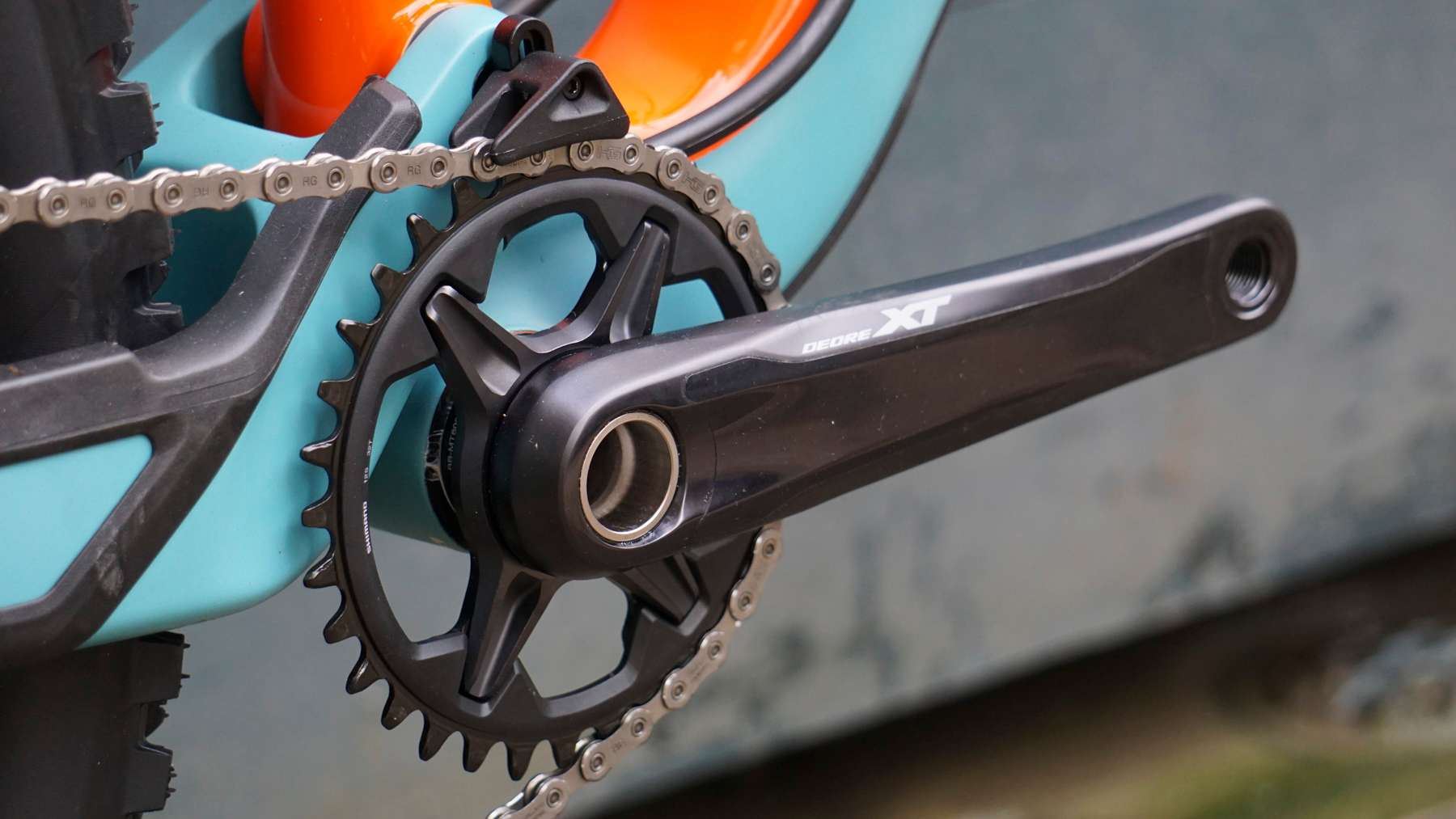
Shimano XT cranks 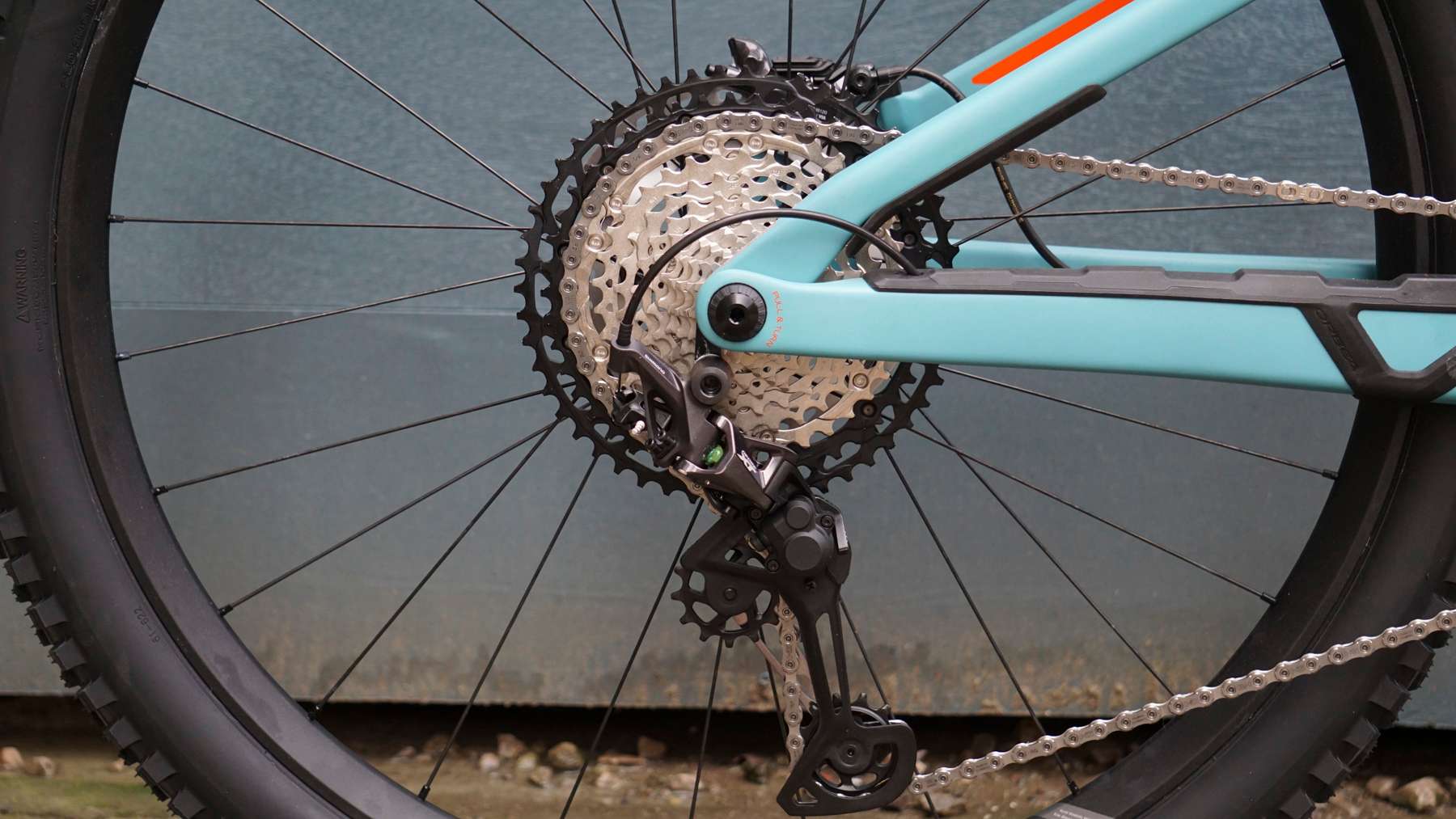
and drivetrain
Wheels are DT Swiss XM-1650 Spline featuring alloy rims with a 30mm internal rim width giving the tyres a good profile, laced to DT Swiss Star Ratchet hubs. Wrapping those rims are a Maxxis Minion DHF 29 x 2.5 on the front and a Maxxis Minion DHRII 29 x 2.4 on the rear, both in Exo casing.
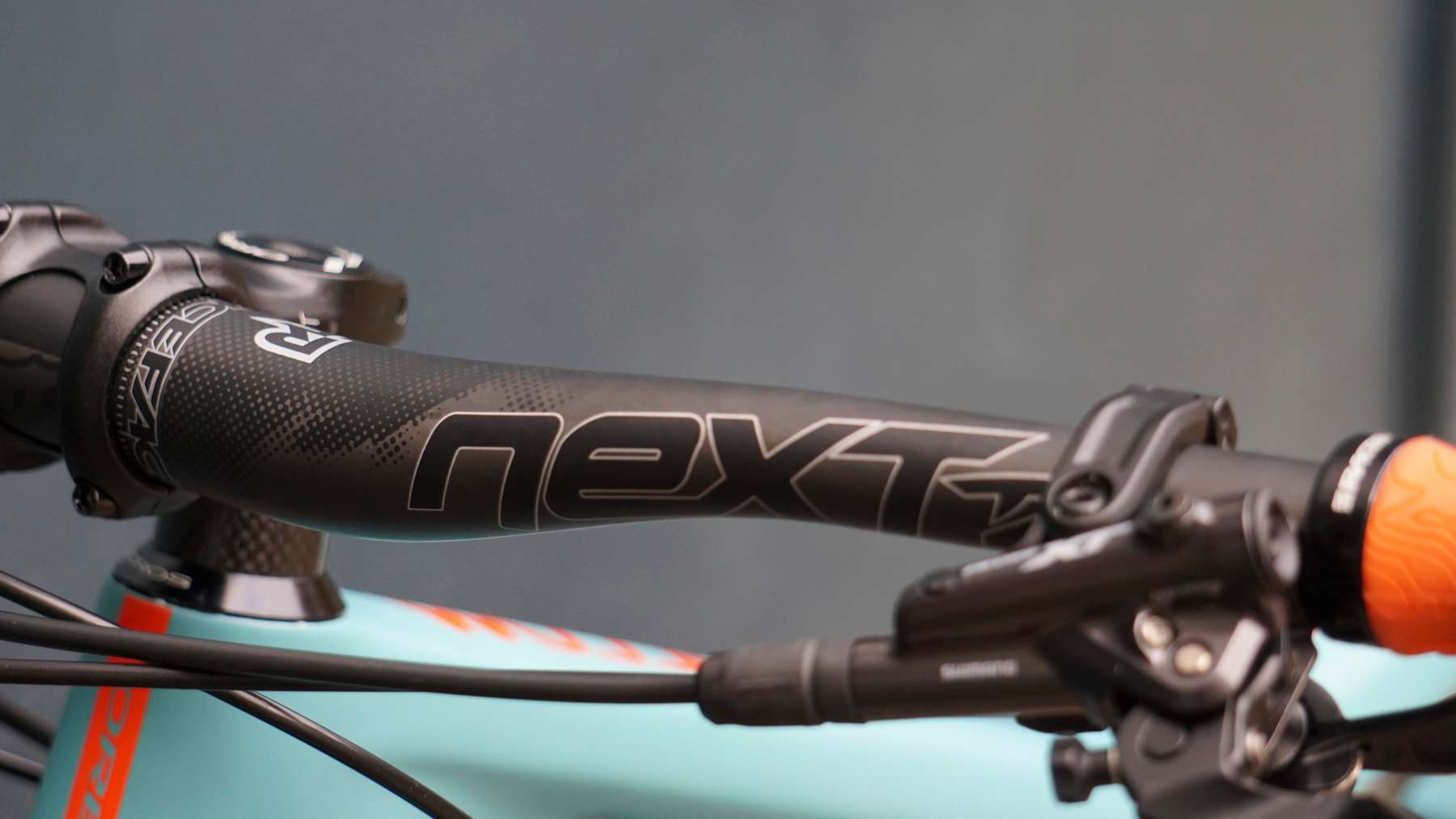
Continuing the high end finishing kit theme, up front there’s a 780mm Race Face Next R carbon bar, held in place with a 55mm stem. Race Face also provides the grips which are a set of Race Face Half Nelson. Rounding out parts spec is a Fizik Taiga Kium Rail saddle mounted on an OC2 150mm dropper post.
Set Up
Out of the box the Orbea Occam requires little set up with the bike arriving fully built. The only thing that needed any real attention was the suspension. Using the online Fox tuning guides is simple enough, with recommended pressures as well as rebound and compressions suggested settings. It’s then just a case of tweaking to suit your individual needs.
To ensure that you’re running the correct amount of sag on the bike (and as RockShox own the patent for printing sag indicators on shocks), Orbea provide a handy CNC’d sag measuring tool in the box with notched points for 25% and 30% sag, making things even simpler.

The rear shock is supplied with 0.2 spacer already fitted and an additional 0.4 in the box. When first setting the bike up I was having to put near the limit of air in the rear shock so swapped the spacer out for the 0.4. This in itself is an easy enough job – remove the rear shock from the bike, let the air out, unscrew the air can and then just swap the spacers by slipping them on / off the shaft.
Having swapped the spacers round, I was still having to put too much air in the rear end so I whipped the shock off the bike again and changed to a 0.6 spacer. With a larger spacer now in there I was getting the 30% sag that I was looking for at around 255psi.
The Ride – Climbing
Jumping on the Orbea Occam for the first ride the sizing and geometry immediately felt familiar, with no particular quirks. The on trend reach measurement, along with the steep seat angle, gives a good seated position for long days on the saddle and when sitting and spinning along. As the bike arrived in late January, pretty much all its outings have been in properly filthy, muddy, gritty, Northern conditions. It’s been ridden as a day to day trail bike up and over the moors and hills, but has also spent its fair share of time at the local bike park.
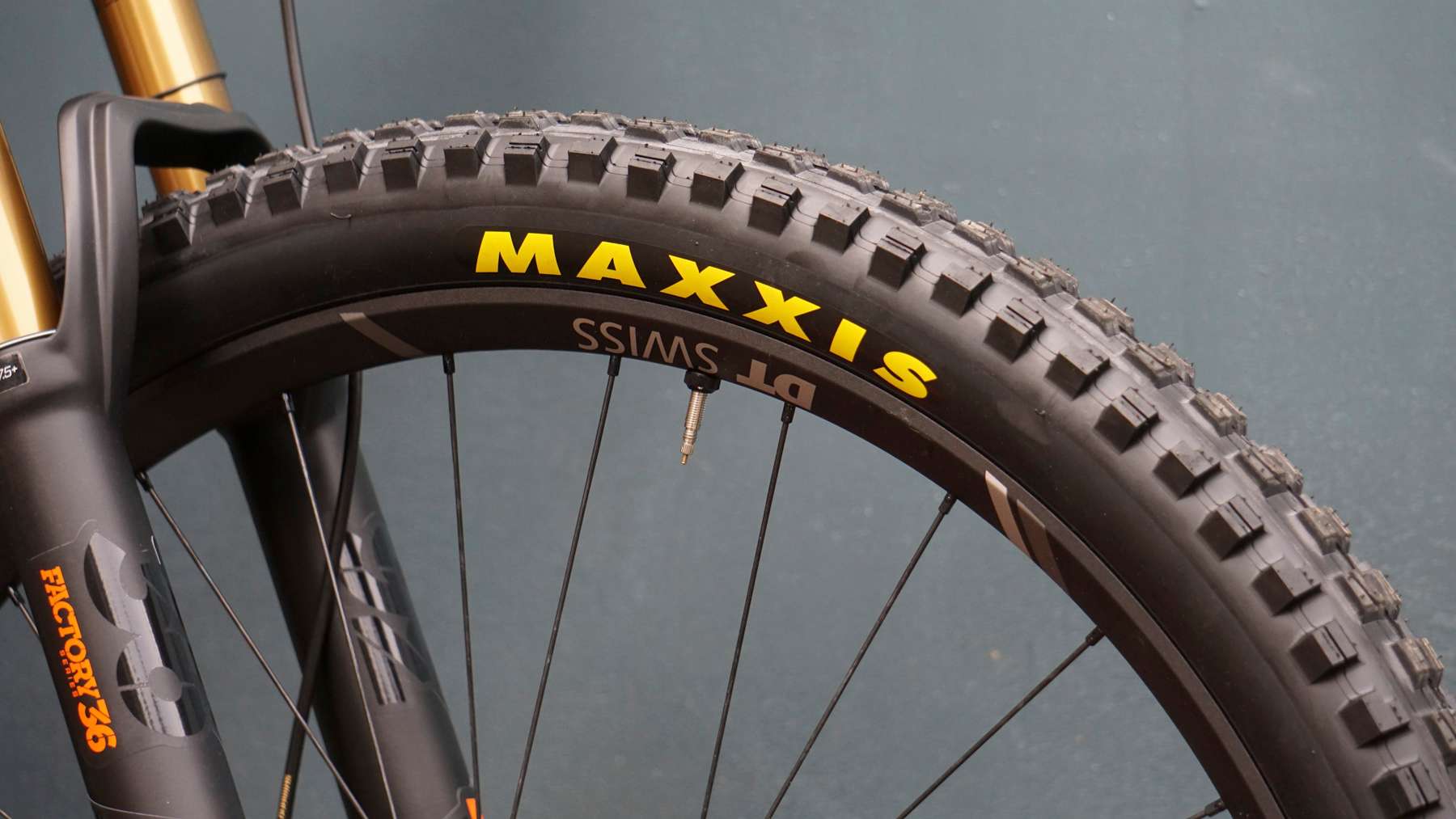
The Occam picks up and carries speed well. The light weight, and quick hub engagement get things moving nice and quick and it’s easy to spin on flats and gentle traverses, getting you to the trails with minimum fuss. Once the gradient increases and the trail points up, the Occam doesn’t disappoint. The anti squat in the suspension does a good job of tightening things up under load which translates into forward motion rather than momentum sagging bob. The well proportioned front and rear ends put you in a good position for seated climbs, keeping your weight nice and centred for even weight distribution, allowing you to keep the front down while maintaining plenty of traction.
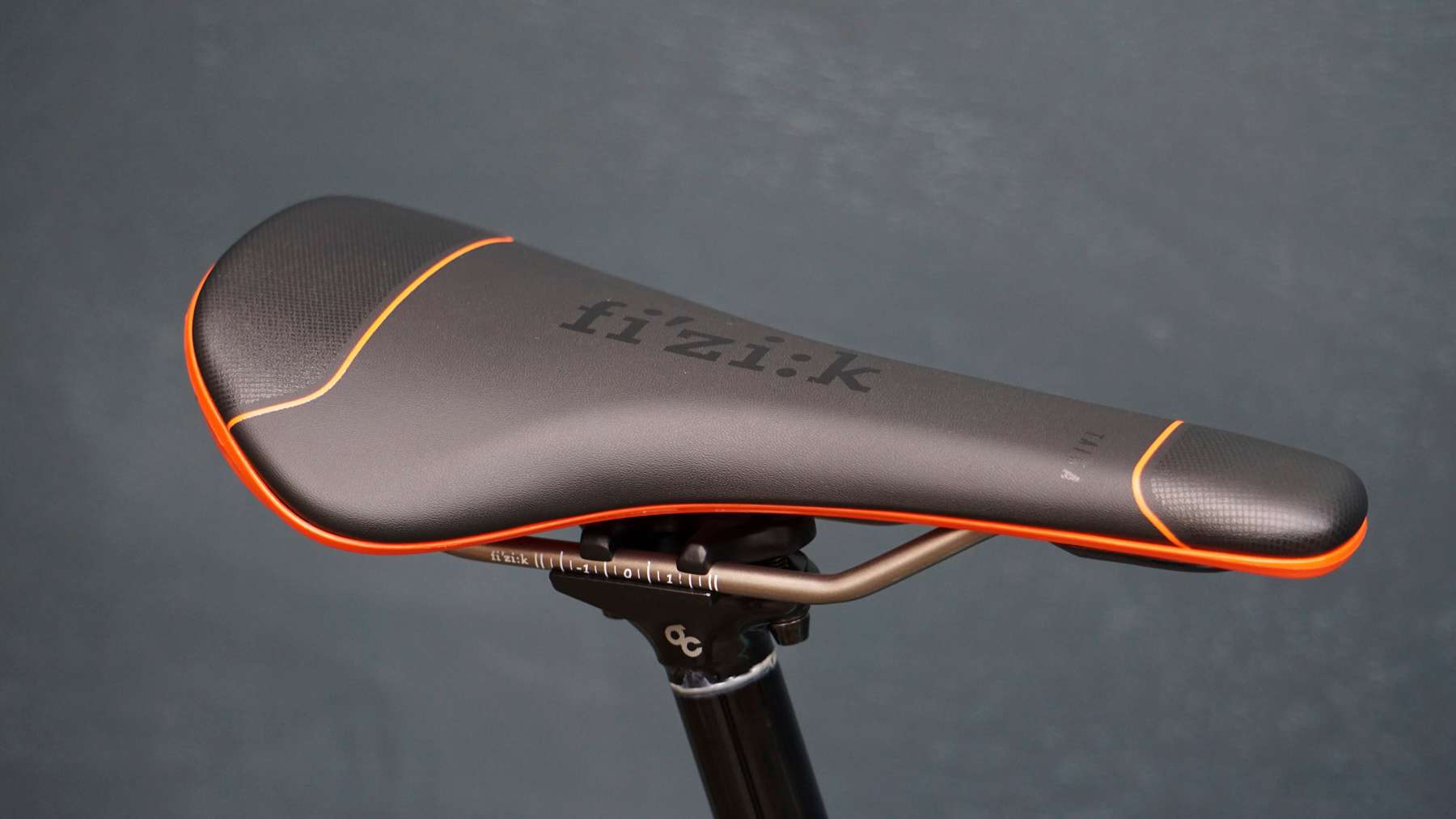
Fizik saddle 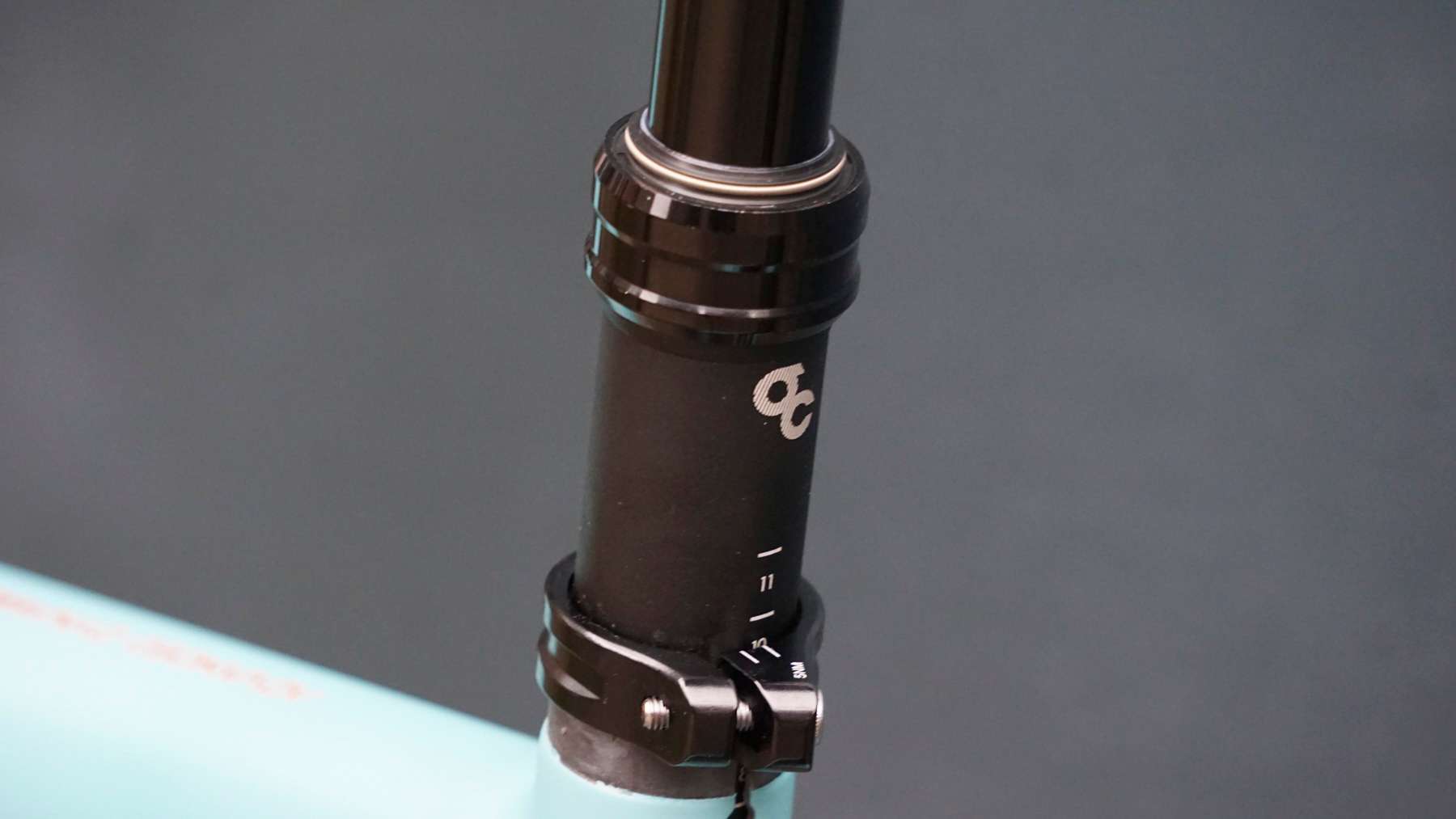
OC dropper
Winching up steep, loose, climbs the Occam again does a good job of keeping traction, It’s easy to get up and over trail obstacles with just a shift in weight. Even when out of saddle on steep, tech climbs, the suspension does a great job of transferring power while still remaining active and supple enough to keep traction. Aided by the 12 speed Shimano drivetrain, the Occam can claw its way up pretty much anything you want to point it up.
While it is a reasonably long bike, the relatively conservative head angle and easy handling makes getting round tight uphill turns nice and easy. The Occam is comfortable, and capable, for spinning along all day, but I did end up swapping the stem for a slightly shorter length during the test period to get my preferred riding position.
The Ride – Descending
One thing you notice when you start getting some momentum is how quiet the Occam is. Coasting along the freehub is practically silent. The rubber chain guides, along with the internal cables mean there are no loud rattles, making it a really quiet ride.This lets you concentrate on riding and hearing what the bike and the tyres are doing underneath you.
Once you’ve got yourself to the top of the climb, the gradient reverses and the trail starts going down, the Occam is no slouch. The big wheels carry momentum well and the suspension offers plenty of support for pumping downslopes looking for free speed. This same support offers plenty of pop for boosting off roots and rocks, keeping the bike feeling agile, encouraging you to look for small trail features to gap and double up.
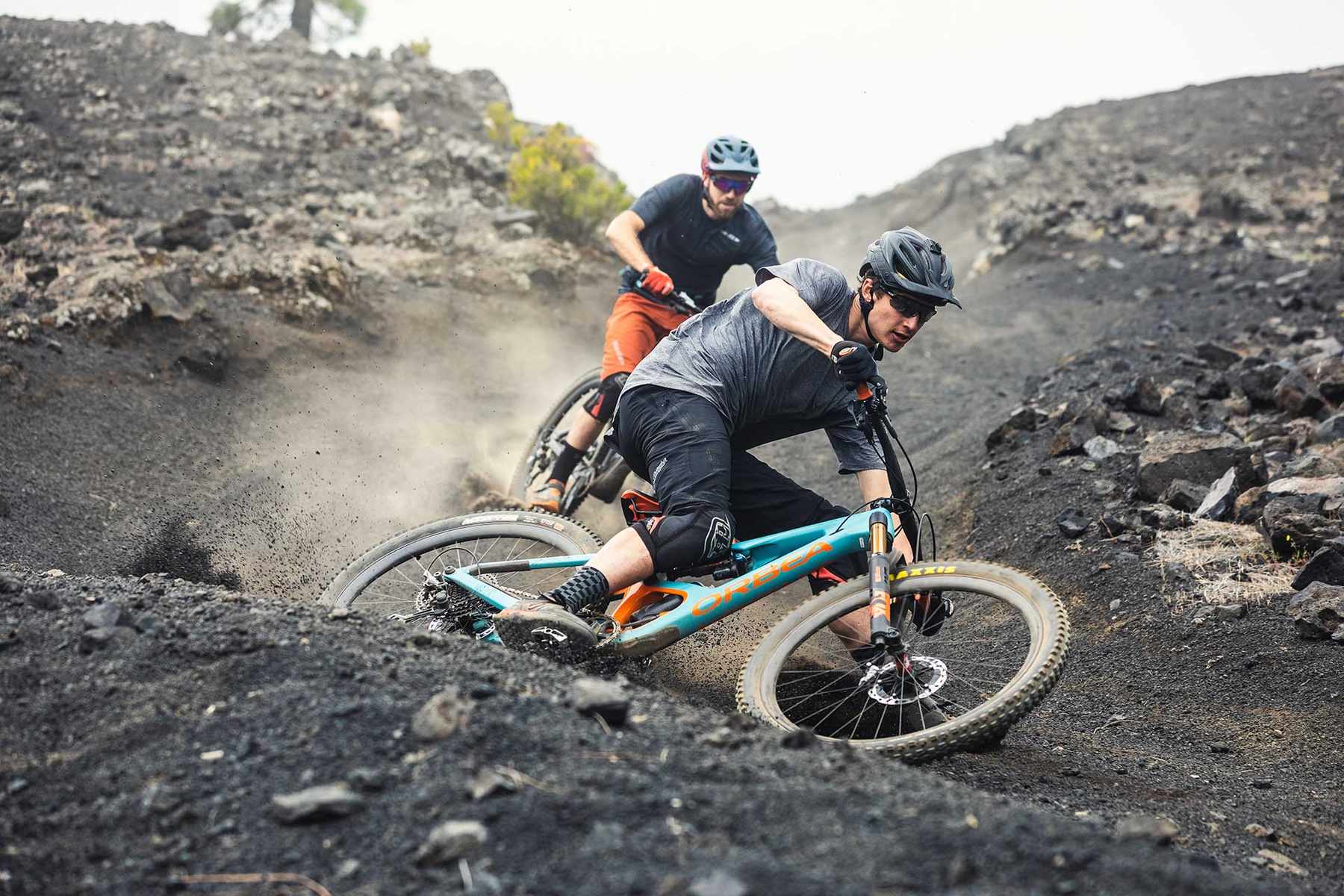
On faster, chunkier, terrain the bike is easy to pick up and over obstacles and the well damped front and rear suspension allow you to smash through rough sections. While it’s ‘only’ 140mm it’s handled everything I’ve chucked it down without issue. The top end 36 fork up front lets you pick lines through super rough tracks and plough through, with the DPX2 out back doing a good job of controlling the rear.
When things start to get steeper and techier the Orbea Occam again isn’t fazed. The roomy front end puts you in a good position for weighting the front and pushing into steep tracks and turns, with shifts in body weight to move the bike around. The stiff, supportive fork and ‘not too steep’ head angle make it easy to negotiate tight turns, and the bike is easy, and manageable to get in the air.
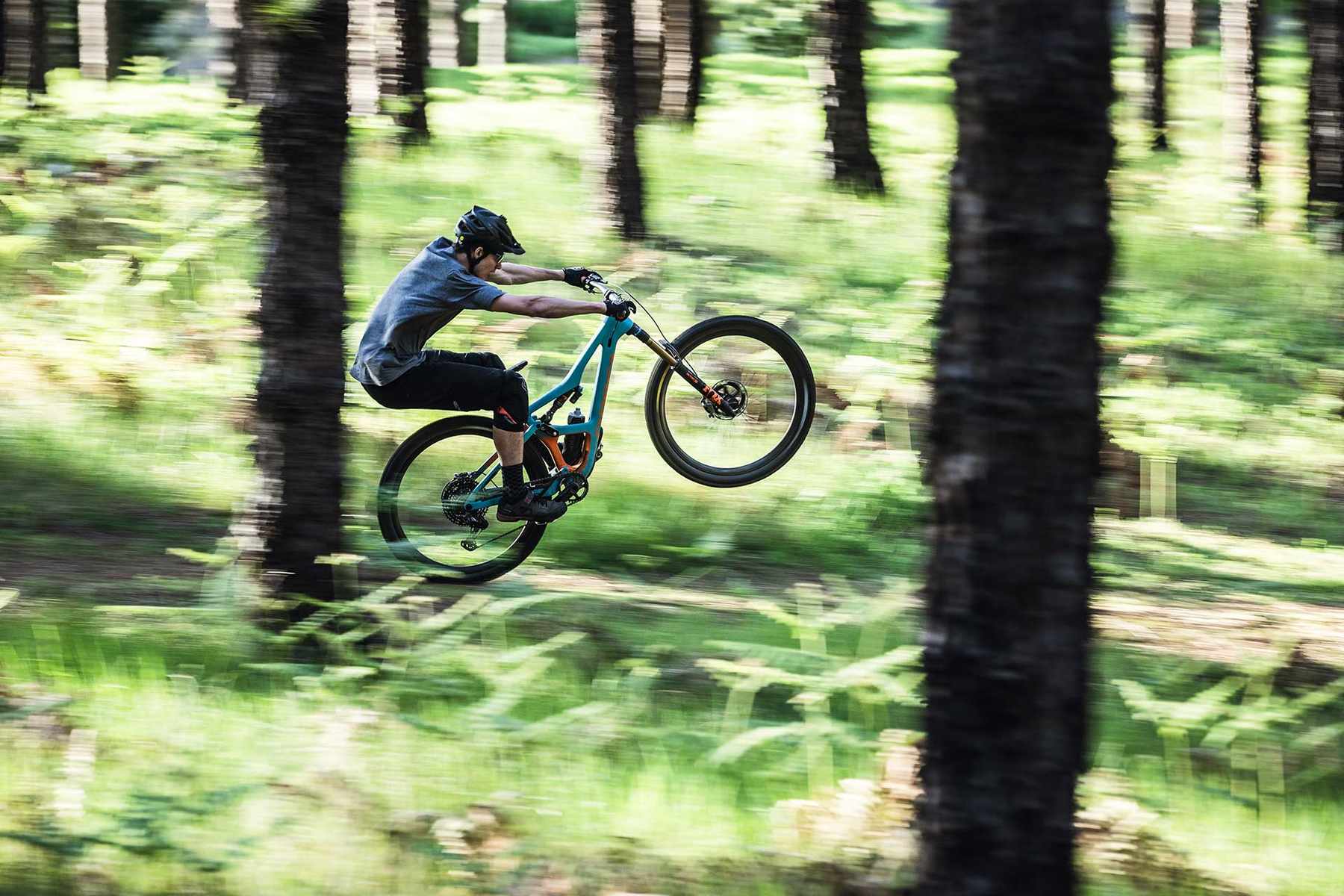
When things do start to get a bit out of hand, the XT 4 pots do a good job of slowing you down, although with the capability of the Orbea Occam, it may be worth upping the size of your front rotor for a bit more stopping power.
Three things that could be improved on the Orbea Occam:
- Bigger front rotor – the Occam is capable of some proper riding so a bigger front rotor would give additional confidence
- Although the dropper is adequate, a longer dropper would be beneficial and can be specced on order
- Shorter stem
Three things we loved about the Orbea Occam:
- Top drawer M10 parts spec with easy upgrade options
- Confident all round handling, both up and down
- Light weight
Orbea Occam Overall
Orbea describes the Occam as the bike for people who ride to the top of the bike park one day, and push up a mountain the next. Someone who needs one bike for everything. And the Orbea Occam M10 does pretty much what it says on the tin. It’s a good climber, is capable on descents, and is backed up by a top spec parts list.
Orbea Occam
It’s proved itself as a proper allrounder and while it’s only got 140m of rear travel, it’s never felt out of its depth on anything I’ve ridden it on. From long rides in the hills, to bike park laps and off piste ruts, the Occam is happy to do it all. It’s light and playful, yet stable when pushed on. Basically, it’s a fun and easy bike to ride and comes with a spot on spec from straight from the box. If you’re looking for one bike to do everything, then the Orbea Occam M10 would be worth a long hard look.
Join our mailing list to receive Singletrack editorial wisdom directly in your inbox.
Each newsletter is headed up by an exclusive editorial from our team and includes stories and news you don’t want to miss.








Nice looking bike. I think the gulf racing colour combo helps there.
Lovely looking bike, just looks right.
I,m really considering my 2018 slightly to small Trek Remedy to this bike in this build or to an SC Hightower.
Any thoughts on how they compare?